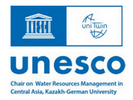



Year: 2023
Collections: Scientific Publications
Topics: Agriculture, Sustainable Development, Management
Authors: Conrad Christopher, Kussainova Maira, Schmidt G.
Countries: Kazakhstan, Kyrgyzstan, Uzbekistan, Tajikistan, Turkmenistan
Source: Central Asian Journal of Sustainability and Climate Research
The increasing demand for food, bioenergy and other agricultural products, as well as the intensification of climate change, pose special challenges for Central Asia’s agricultural sector in terms of implementing sustainable land management. Central Asia is a climate change hot spot. Adaptation measures of agricultural land use to climate change imply new trade-offs in terms of quality and provision of ecosystem services. Based on literature studies, this paper identifies examples of such trade-offs and presents possible solutions. The ecoregions of Central Asia show strong interdependencies. Therefore, a special focus has to be put on the transregional effects of the use of ecosystem services. Against the background of different concepts of sustainable development (ESS, SDG, Global Environmental Syndromes) integrative approaches for sustainable use and design of landscapes are necessary.
Year: 2024
Collections: Policy Briefs
Topics: Climate, Agriculture
Authors: Rieks Bosch
Countries: Kazakhstan, Kyrgyzstan, Uzbekistan, Tajikistan, Turkmenistan
Source:
The fertility of soil is depending on the minerals
available, the structure of soil, organic matter
in soil, water availability and micro organisms
living in the soil. Together they determine most of the productivity of land.
Year: 2024
Collections: Scientific Publications
Topics: Water, Climate, Agriculture
Authors: Nazar Nurzoda
Countries: Tajikistan
Source: https://water-ca.org/
This study aimed to examine the efficiency of different drip irrigation regimes in spring film greenhouses for early tomato harvesting. The field (small-plot) experiment included designing and testing the watering technology suitable for rural Tajikistan. Irrigation, soil moisture, and tomato growth were followed for several seasons under four irrigation pilots. The experiments showed that the most effective drip irrigation regime for Elpida hybrid tomato was carrying it out while regulating soil moisture within 75-85%, with the irrigation demand of 4,978 m3/ha and irrigation norm of 99.0 m3/ha, also contributing to better water efficiency. The volume of irrigation water for the production of one unit of tomato crop in the second experiment was 5.73 m3/ha, i.e. 14.18% less than in the control plot. The study showed that the tomato evapotranspiration coefficient tends to increase as the threshold of soil mois-ture before and after irrigation grows. The maximum net yield amounted to 1,342 thou. Somoni/ha – 1.9 times or 52.7% higher compared to the control plot. The research findings can guide individual farmers and production facilities, as well as the overall development of agrarian economies like Tajikistan.
Year: 2025
Collections: Scientific Publications
Topics: Water, Energy, Agriculture
Authors: Hamidov Ahmad, Bobocholov Asliddin, Sonoko Dorothea Bellingrath-Kimura
Countries: Uzbekistan
Source: water-ca.org
The water, energy, and food (WEF) nexus is being promoted as a conceptual idea for achieving sustainable development, that describes the interconnections and interdependencies between those three sectors. The main objective of this article is to operationalize the WEF nexus concept in lift-irrigated areas of Uzbekistan through involving local stakeholders, to investigate the WEF nexus within the lift-irrigated agriculture of the Kashkadarya region, an area heavily reliant on the Karshi Canal system. The study is grounded in the urgent need for sustainable development, with a focus on enhancing intersectoral cooperation between water, energy, and food sectors. A case study methodology was employed, incorporating semi-structured interviews with experts, alongside local farmers and scientists. Data were analysed using the qualitative analysis software, Atlas.ti. The results indicate significant challenges to intersectoral cooperation in the WEF nexus, including lack of trust, communication barriers, differing priorities, and insufficient political will. However, the findings also highlight the potential benefits of improved cooperation, such as enhanced resource efficiency, reduced operational costs, and mitigated risks from environmental stressors like drought. The study concludes that, according to stakeholders’ opinions, while the WEF nexus presents critical opportunities for advancing sustainable development in Uzbekistan, substantial barriers must be addressed to realize these benefits. Recommendations include promoting sustainable agriculture to reduce water dependency, improving energy security by diversifying energy sources, and raising awareness of the WEF nexus’s importance. Furthermore, fostering stronger stakeholder cooperation is crucial for achieving Uzbekistan’s Sustainable Development Goals (SDGs) by 2030.
Year: 2025
Collections: Scientific Publications
Topics: Agriculture
Authors: Ankit Garg, Sai Krishna Akash Ramineni, Neelima Satyam, Askar Zhussupbekov
Countries: Kazakhstan, Kyrgyzstan, Uzbekistan, Tajikistan, Turkmenistan
Source: https://cajscr.com/
Soil salinity in Central Asia negatively impacts soil structure, leading to degradation and reduced water infiltration. This not only hampers agricultural productivity but also makes the land less suitable for construction due to its high susceptibility to deformation. Environmentally friendly materials like biochar, a carbon-rich substance, show promise in reducing the deformation of saline soils. However, the mechanisms behind its effectiveness are not yet fully understood. This study aims to analyse saline clays’ dispersion and sedimentation behaviour under varying pore water salinity levels (0 % to 10%). A biochar content of 5 % was selected as it is found to be optimum for plant growth and erosion resistance. It was found from the study that the biochar increases the aggregation of soil particles and enhances flocculation, improving soil dispersion characteristics. Biochar facilitates soil particle aggregation by increasing the cation exchange capacity. At higher pore water salinity levels (5% and 10%), the sedimentation behaviour of biochar-treated soil particles deviates from expectations, showing slower sedimentation rates and lower sedimentation heights. This is because the sodium ions are adsorbed by biochar, reducing salt’s effect on dispersion and sedimentation. The results demonstrate that biochar effectively enhances the stability of saline soils and, hence, has a potential use for ground improvement in the Central Asian region.
For questions about cooperation, please contact us at: